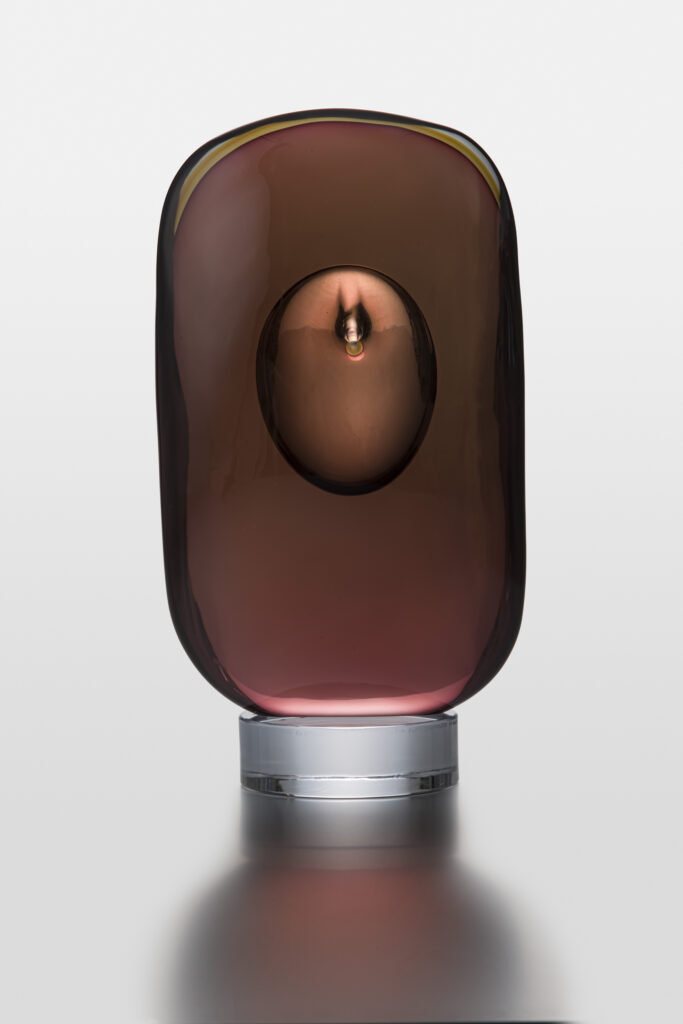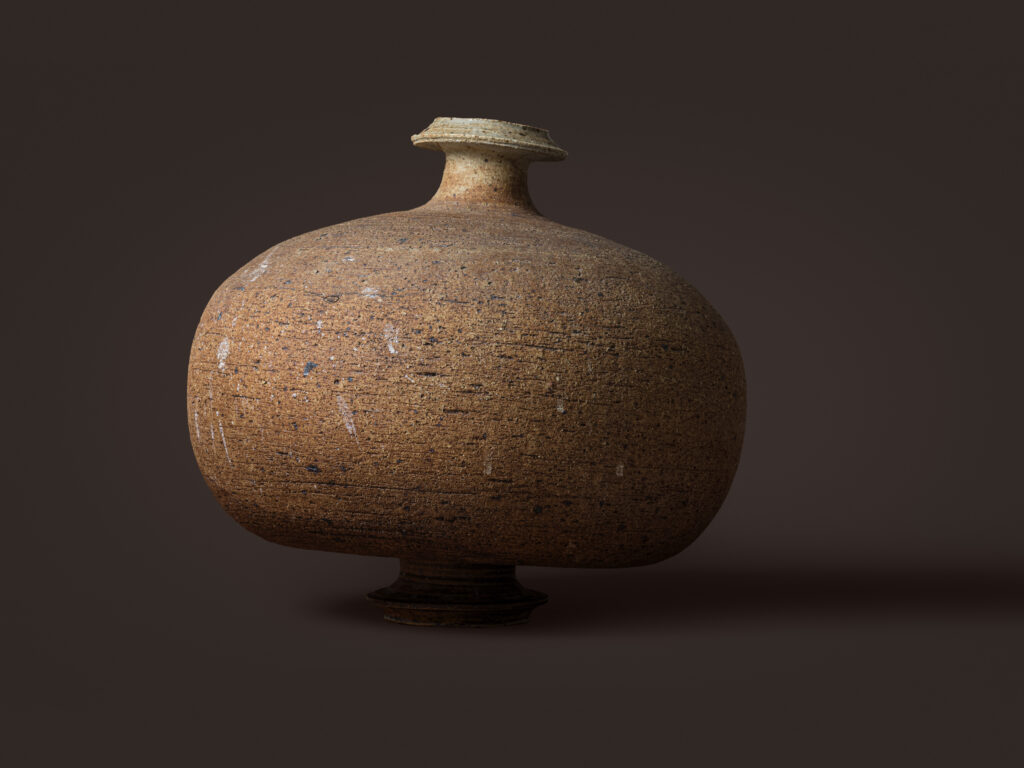
The Collection Kakkonen exhibition at EMMA breaks the boundary between art and design and tells the story of Finland
EMMA, The Espoo Museum of Modern Art, presents the greatest reform of its time by opening a new exhibition room in cooperation with the City of Espoo. This room of 1,000 square metres is completely dedicated to Collection Kakkonen. Weekly met with the opening exhibition’s curator Aura Vilkuna and exhibition architect Aleksi Kuokka of Aivan before the opening event.
Kyösti Kakkonen is a Finnish businessman and a notable collector of art and design. His Collection Kakkonen placed long term at EMMA is finally open to public. Focused on glass and ceramic art, Collection Kakkonen is an internationally significant manifest of Finnish design from modernism to modern day. Collection Kakkonen comprises more than 10,000 objects, of which 1,300 are displayed at EMMA.
Weekly: Aura Vilkuna, you have been exploring the collection for a couple of years now. What would you like people to pay attention to when visiting Collection Kakkonen?
Aura Vilkuna: People may not know that Kyösti Kakkonen has been very open-minded in his collecting endeavour and also acquired works from less famous designers. For example, the collection includes works from less known women ceramic artists. There is “endogenous equality” in Collection Kakkonen. Kakkonen has clearly focused on retrospectives, too. He has bought series and ensembles of works. A collection this large could be curated in many ways.
Weekly: Collection Kakkonen is very familiar also to exhibition architect Aleksi Kuokka. Aleksi knows that unique design and glass and ceramic art and their creators form the core of the collection. In addition to the exhibition, the works can be explored via a Finnish book series titled Lasin ja keramiikan mestarit (“Masters of Glass and Clay”), to which Aleksi contributed as Art Director.
Aleksi Kuokka: Yes. I have noticed a huge contrast between the newer and older items in the collection. The oldest items are from fairly established artists and the latest from new upcomers, some of which are surprising choices.

Weekly: Collection Kakkonen focuses on the period after the two world wars, the so called golden age of design. That is when Finnish design gained significant international reputation, too. According to the EMMA museum, the most pivotal artists in the collection include Alvar Aalto, Rut Bryk, Kaj Franck, Birger Kaipiainen, Toini Muona, Gunnel Nyman, Kristina Riska, Kyllikki Salmenhaara, Markku Salo, Timo Sarpaneva, Michael Schilkin, Kim Simonsson, Nanny Still, Oiva Toikka, Kati Tuominen-Niittylä, Helena Tynell, Heini Riitahuhta and Tapio Wirkkala. It seems that Finnish design is still an important criterion. Is that so?
Aleksi: Oh yes. The collection includes some works bought back from abroad. It is important for Kyösti Kakkonen to contribute to the history of Finnish design and to strengthen the brand of Finland in his own way.
Aura: With this exhibition, we’re also highlighting the artists outside the golden era. We’ve put thematic focus on breaking the boundary between design and art, challenging the stereotyped boundaries. The exhibition functions as a basis for thinking about the difference.

Weekly: The collection has been built for decades based on personal taste and insight. Therefore the exhibition probably only includes “truly beautiful objects”. Which are your personal favourites?

Aura: Gerda Thesleff’s ceramic objects from the early 1900s are really magnificent. Studying them provides a new viewpoint to our cultural history, ceramist Thesleff being highlighted as the artist. She has been overshadowed by her famous sister Ellen, the painter. By form, these objects are vessels, of moderate size, due to limited space in the studio. Italian landscape is often the motif. Gerda spent long periods in Italy with her sister Ellen Thesleff. The memories of these travels are drawn on the surface of the vases. We want to challenge the visitors to look at these expressionist landscapes and fauvist plant motifs as if they were paintings – painted instead of a canvas on clay with slip or glaze.

Aleksi: My favourite is the “Glass Forest” (Lasimetsä) by Oiva Toikka that can be experienced in the first part of the exhibition. It, too, is really magnificent.
Weekly: In addition to design items, the collection includes hundreds of unique works of art. There is the Glass Forest and also “Singing of Migratory Bird” (Muuttolinnun laulu) by Rut Bryk and a “Pearl Bird” (Helmilintu) by Birger Kaipiainen.
Aleksi: Right, the motif of many important works in Kyösti’s collection is nature.


Weekly: To conclude, let’s talk about the venue. Designed by Aarno Ruusuvuori in the 1960s, the museum building represents pure brutalism. Is his modernist view present in the exhibition rooms?
Aleksi: Structurally, the exhibition has been built completely in terms with the architecture. We have peeled off layers to reveal the brutalism and highlight the features of the building, including the use of light. Its handsome dimensions and open views also guided me in exhibition design, as did the idiom based on basic forms that stands the test of time and use.
Aura: At EMMA, our initial wish was to use wooden materials in the exhibition rooms. Wood is a reference to the location, the Tapiola gardencity, and softens the building materials.
Aleksi: After about hearing the wish to use wood, we wanted to fullfil that wish as simply and genuinely as possible. Finnish larch also represents the father of the collection who is a fan of deep-rooted Finnishness.

Weekly: The purpose of the collection is to provide constant awareness and access to the public. Aura, to what do you want the visitors to pay special attention?
Aura: My tip is to check out the wall where all artists are presented. The wall includes one object or a group of objects from each artist in more or less chronological order. The display forms a timeline for the collection and reflects its temporal scope. We wanted to make the exhibition visually clear and comfortable while taking into account informativeness. By using the pads placed by the wall, the visitors can learn about each item by clicking its picture and reading about the artist. In addition to the descriptions produced by EMMA, there is a simple timeline for each career. The app also includes an alphabetical index of the artists.

Collection Kakkonen opened 10 November 2022 at EMMA, the Espoo Museum of Modern Art. Tickets 20 €; 0 € for under those under 18 and over 70 years of age. The exhibition was produced in cooperation between Kyösti Kakkonen, EMMA and the City of Espoo. More details can be found here.